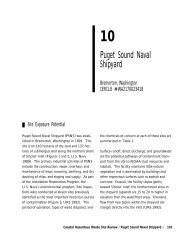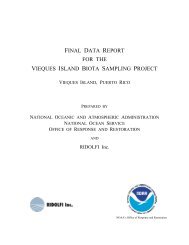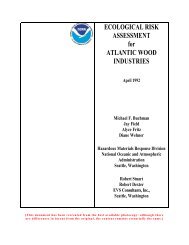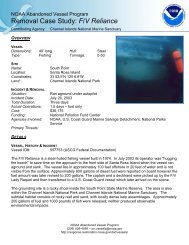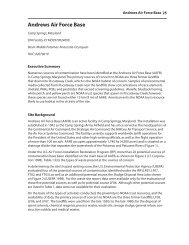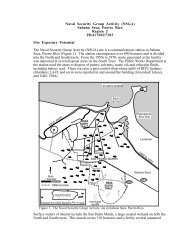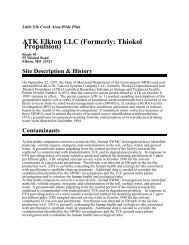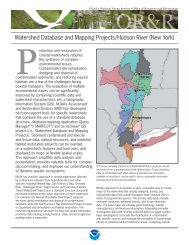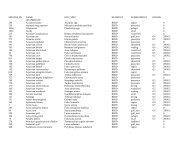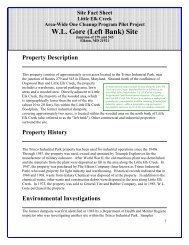The Coastal Resource Coordinator's Bioassessment Manual
The Coastal Resource Coordinator's Bioassessment Manual
The Coastal Resource Coordinator's Bioassessment Manual
You also want an ePaper? Increase the reach of your titles
YUMPU automatically turns print PDFs into web optimized ePapers that Google loves.
HAZMAT 93-1 Role of <strong>Bioassessment</strong><br />
CHAPTER 2<br />
THE ROLE OF BIOASSESSMENT IN THE REMEDIAL<br />
PROCESS<br />
INTRODUCTION<br />
<strong>The</strong> selection of the appropriate bioassessment procedure(s) is dependent on the objectives<br />
of the particular stage in the remedial process. <strong>The</strong> amount of information required to make<br />
necessary decisions regarding further activities at the site tends to increase as the overall<br />
assessment of a site proceeds from the preliminary screening to the endangerment<br />
assessment and selection of remedial action. Regardless of the stage in the remedial<br />
process, it is of primary importance to clearly establish the intended application of<br />
bioassessment data prior to such data collection, including the specific questions that are<br />
being addressed, the proposed decision criteria, and appropriate sampling strategy and<br />
statistical design. If properly planned, data collected at each stage can be used to guide the<br />
development of work plans for subsequent stages. <strong>The</strong> early incorporation of an overall<br />
sampling design that adequately addresses the potential risks to natural resources reduces<br />
the possibility of additional sampling later that might delay or hinder the remedial process.<br />
<strong>The</strong> role of bioassessment approaches during the different stages of a site remediation is<br />
discussed in more detail in this chapter.<br />
PRELIMINARY ASSESSMENT<br />
<strong>The</strong> data needs for the preliminary assessment are usually directed toward broad-scale<br />
screening for evidence of release of contaminants to the environment and the presence or<br />
absence of toxicity. <strong>Bioassessment</strong> procedures, particularly bioaccumulation studies and<br />
toxicity tests, can play an important role in site screening.<br />
<strong>The</strong> bioaccumulation of chemical contaminants in tissues of resident organisms effectively<br />
demonstrates the bioavailability of contaminants associated with the site. For contaminants<br />
known to bioaccumulate to a greater extent in higher trophic level organisms (e.g., PCBs,<br />
mercury), determining the degree of contamination in a representative higher trophic level<br />
organism may provide a worst-case evaluation appropriate for the preliminary assessment.<br />
Combined with information on the site history, visual observations of site characteristics<br />
and chemical analyses, toxicity tests can provide qualitative information on the distribution<br />
2-1 July 2003




